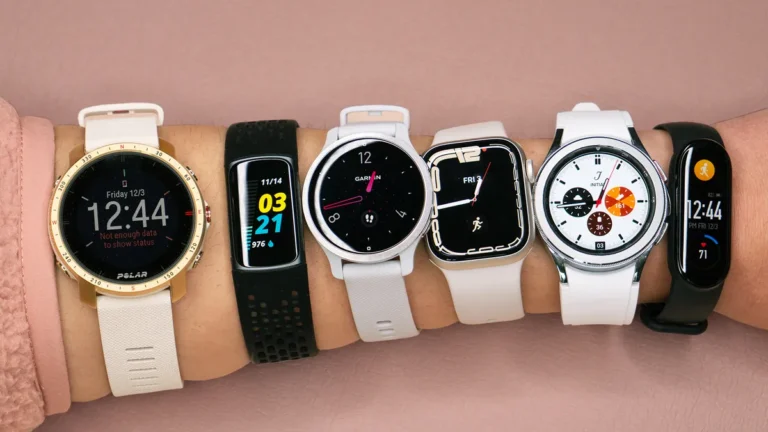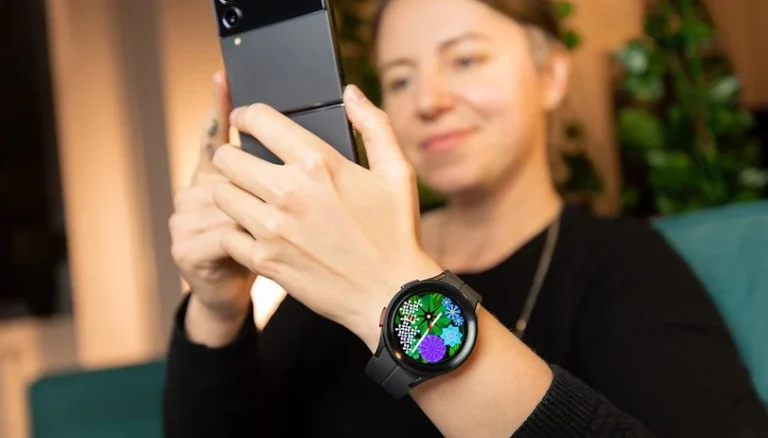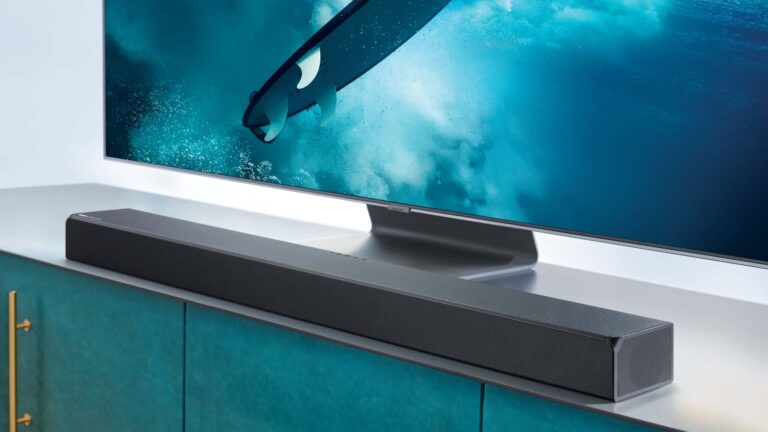In the constantly changing world of home entertainment, Samsung Smart TVs have established themselves with exceptional picture quality and a user-friendly interface that simplifies streaming. Despite the prevalence of streaming services, there is a nostalgic appeal and practicality in accessing over-the-air (OTA) broadcasts. Whether it’s local news or live sports events, the variety of content accessible through a basic antenna connection is both impressive and enjoyable. However, I’ve discovered that not all antennas are equally effective, particularly when it comes to optimizing them for a Samsung Smart TV.
My journey into the world of OTA broadcasts was not straightforward. At first, I struggled with the many options and technical terms. Through trial and error, I gained valuable insights into TV antennas. I learned that the correct antenna could provide a wealth of content in high definition, without a monthly subscription.
In this blog post, I will talk about Samsung Smart TVs and the different types of antennas. I will help you choose the right antenna, whether it’s for indoors or outdoors. I will also give installation tips and troubleshoot common antenna problems. Let’s explore OTA broadcasting together to enhance your Samsung Smart TV experience!
In case you’re in a hurry? Here is our winner
Antennas Direct ClearStream 4V TV Antenna
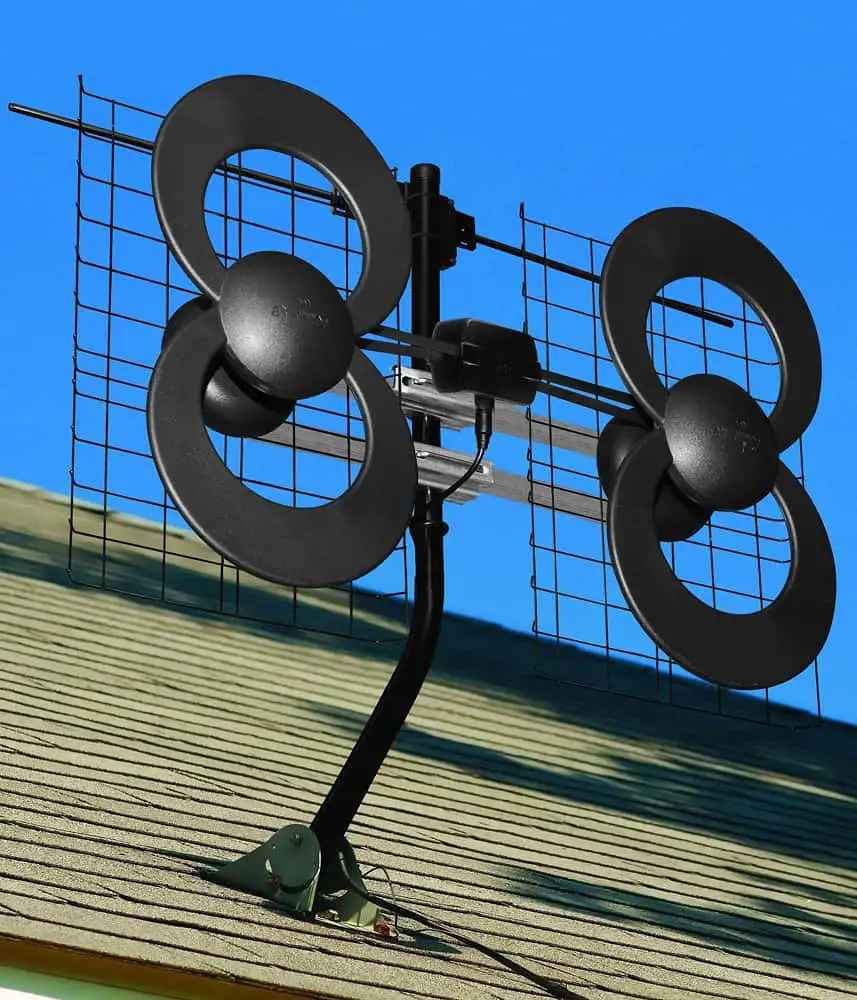
Features
- 70+ Miles Range
- 6.5 lbs. Weight
- 174-216 MHz / 470-608 MHz Frequency
- 43-Degree Horizontal Reception Pattern Beam Angle
Customers say about Antennas Direct ClearStream 4V
Customers praise this antenna’s effortless assembly and installation. They rave about its crisp, high-definition picture quality and impressive channel reception. The antenna’s robust construction and reliable signal strength have also received accolades. Overall, customers highly recommend this antenna for its outstanding reception.
My Experience with Samsung Smart TVs
Beginning the OTA Journey
My journey with Samsung Smart TVs started as a search for excellent picture quality without the constraints of monthly streaming subscriptions. Samsung, known for its vivid displays and user-friendly design, was the natural choice. My initial experience was seamless, focused on streaming services providing content instantly. Yet, the appeal of free, over-the-air broadcasts – offering local news, live sports, and classic reruns – proved irresistible. This prompted me to navigate the somewhat complex task of choosing the ideal antenna, a process filled with technical details but ultimately fulfilling.
The Learning Curve
Diving into the world of OTA broadcasts, I was confronted by a barrage of terms: VHF, UHF, range, gain… It was daunting. The realization hit me; optimizing the antenna setup for a Samsung Smart TV wasn’t going to be a walk in the park. Each failed attempt was a lesson in disguise, pushing me to understand the importance of signal strength and frequency bands. It was a trial by fire that taught me the value of patience and research in finding the antenna that not only promised compatibility with my TV but also suited my viewing preferences and geographical location.
Finding the Right Antenna
After numerous trials and a fair bit of frustration, I stumbled upon a few antennas that seemed tailor-made for my needs. Indoor models like the Mohu Leaf stood out for their sleek design and ease of installation—a perfect match for urban settings with strong signal reception. On the other hand, outdoor antennas like the Winegard Elite offered a robust solution for those challenging rural receptions, ensuring that I didn’t miss out on my favorite broadcasts due to weak signals. These discoveries were pivotal, transforming my viewing experience by unlocking a myriad of OTA channels, all in stunning clarity.
A Revelation
The journey was as educational as it was enlightening. It wasn’t just about finding an antenna; it was about understanding the synergy between the antenna and my Samsung Smart TV. The built-in tuner of the TV, I learned, played a crucial role in capturing and processing signals, a fact that underscored the importance of selecting the right antenna. This experience underscored a vital lesson: the beauty of OTA broadcasting lies not only in the content it unlocks but also in the simplicity and cost-effectiveness it offers. My journey had come full circle, from curiosity to frustration to satisfaction, all thanks to the vibrant world of Samsung Smart TVs and the magic of the right antenna.
Types of Antennas for Samsung Smart TVs
Navigating the assorted landscape of antennas for a Samsung Smart TV can initially seem daunting. Yet, understanding the fundamental differences between the types of antennas available is crucial for making an informed choice. In essence, antennas can be broadly classified into two main categories: indoor and outdoor. Each type serves a distinct purpose and comes with its own set of benefits and considerations.
- Indoor Antennas: These are the go-to choice for city dwellers or those living close to broadcast towers. Indoor antennas are known for their ease of installation and unobtrusive design, often resembling a thin, sleek sheet or a compact, discreet box. They are designed to sit near your TV, on a window, or on a wall. The major appeal of indoor antennas is their simplicity and affordability, making them an excellent entry point for anyone new to OTA broadcasting. However, their performance can be affected by walls, buildings, and even weather, potentially limiting the number of channels received.
- Outdoor Antennas: For those situated in rural areas or simply farther from broadcast towers, outdoor antennas are often the best solution. They are mounted on the roof or in an attic, offering a higher vantage point to capture signals. These antennas are more robust in design and capable of receiving a wider range of channels, including those broadcast from farther distances. While the installation of outdoor antennas is more complex and might require professional help, the payoff in terms of channel availability and signal quality can be significant, making them a worthwhile investment for serious cord-cutters.
Choosing between an indoor and outdoor antenna for your Samsung Smart TV largely depends on your location, the distance to broadcast towers, and the specific channels you’re interested in watching. While indoor antennas offer convenience and ease of use, outdoor antennas provide enhanced reception and a broader selection of channels. Regardless of your choice, ensuring compatibility with both VHF and UHF bands is essential for optimal performance. As we delve deeper into the world of OTA broadcasts, remember that the right antenna can significantly elevate your viewing experience, unlocking a world of free content right at your fingertips.
Factors to Consider When Choosing an Antenna
When embarking on the quest to find the perfect antenna for your Samsung Smart TV, several pivotal factors come into play. It’s not just about grabbing the first antenna you see off the shelf; it’s about understanding what makes an antenna the right fit for your viewing needs and your living situation. Let me guide you through the essential considerations that I learned were crucial in making an informed decision.
- Signal Strength and Distance from Broadcast Towers: The first and perhaps most critical factor is the strength of the broadcast signals in your area and how far you are from the source of these broadcasts. Various antennas are designed with different reception capabilities. Some are made for urban environments where broadcast towers are plentiful and close by, requiring less power to catch signals. In contrast, rural settings might necessitate an antenna with more substantial reception capabilities to pull in signals from farther away. Websites like the FCC’s DTV Reception Maps can provide you with an idea of what channels are available in your area and how strong the signals are, guiding you to choose an antenna with the appropriate range.
- Indoor vs. Outdoor Antennas: Your living situation plays a significant role in this decision. If you’re in a high-rise apartment in the city, an indoor antenna might be your best bet due to space constraints and the proximity to broadcast towers. On the other hand, if you’re in a suburban or rural area with more room to maneuver, an outdoor antenna could significantly improve your reception quality. Outdoor antennas have the advantage of less interference and can be placed at higher points, but they do require a bit more effort in terms of installation.
- UHF vs. VHF Bands: Most TV broadcasts are in the UHF (Ultra High Frequency) and VHF (Very High Frequency) bands. While older antennas might only support one of these, most modern options are designed to capture both. However, it’s crucial to know which stations in your area are on which band since some antennas are better at picking up one type of frequency over the other. This knowledge can further refine your search and ensure you get clear, consistent reception.
- Design and Aesthetics: Last but not least, the design of the antenna might be a factor to consider, especially for indoor options. With Samsung Smart TVs often being the centerpiece of a living room, you might want an antenna that blends in rather than sticks out. Fortunately, today’s market offers sleek, unobtrusive designs that can either be hidden away or subtly complement your TV setup.
Understanding these factors transformed my approach from a mere trial-and-error exercise to a more targeted, strategic search. By considering the signal strength, indoor versus outdoor needs, frequency bands, and design aesthetics, I was better equipped to find an antenna that not only met my Samsung Smart TV’s technical requirements but also fit into my home environment seamlessly.
Outdoor Antenna Recommendations
Winegard Elite Outdoor Antenna
When I embarked on my quest to amplify my Samsung Smart TV experience, the Winegard Elite Outdoor Antenna emerged as a standout choice. This robust outdoor antenna is designed to withstand the elements, from blistering summers to freezing winters, ensuring consistent signal quality year-round. What truly sets the Winegard Elite apart is its long-range reception, capable of pulling in signals from up to 70 miles away. For someone living in a suburban area like myself, this feature was a game-changer. It managed to capture a wide array of channels, including those elusive ones that other antennas couldn’t quite grasp. Its installation, while requiring a bit more effort than indoor alternatives, was straightforward, especially with the detailed instructions provided.
Channel Master EXTREMEtenna
Another powerhouse in the realm of outdoor antennas is the Channel Master EXTREMEtenna. This antenna’s name is no exaggeration; it offers an impressive reception range of up to 80 miles. The EXTREMEtenna’s design is both thoughtful and practical, featuring a multidirectional element that eliminates the need for constant adjustment. My experience with this antenna was nothing short of exceptional. It delivered a clear, uninterrupted signal that significantly enhanced my viewing experience. The installation process might seem daunting at first glance, but with a little patience and the right tools, it’s entirely manageable. The Channel Master EXTREMEtenna is an excellent choice for those situated in areas with weaker signals or further from broadcast towers.
Antennas Direct ClearStream 4V
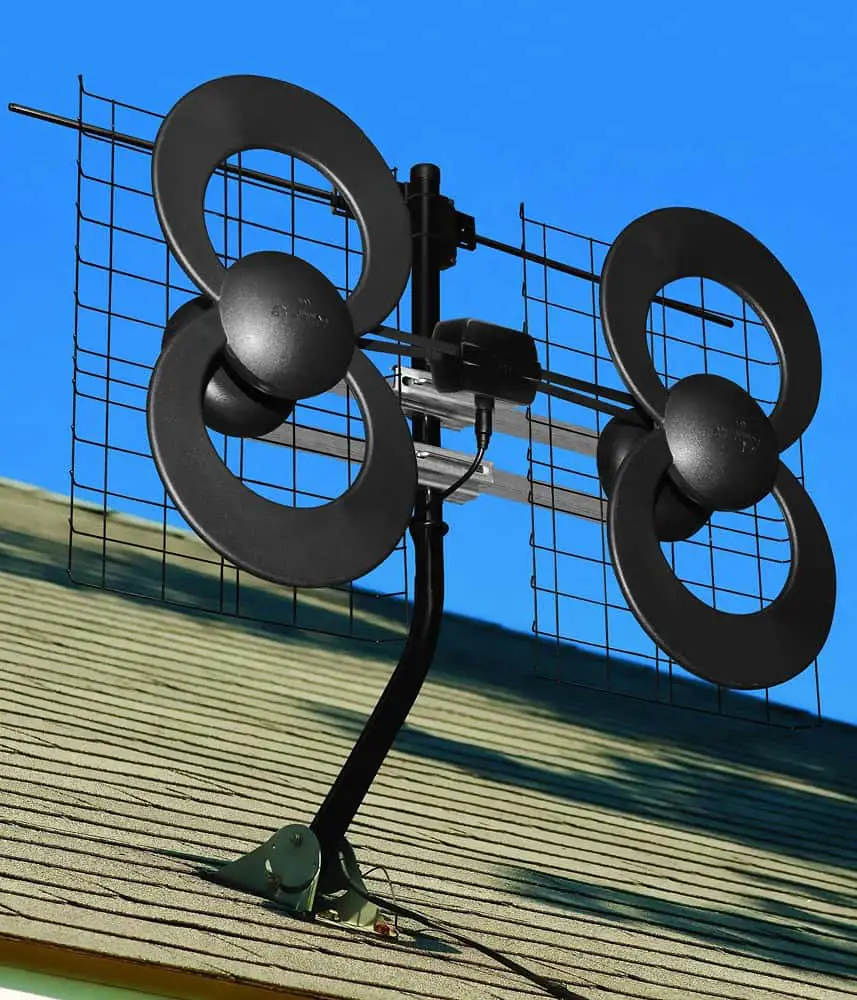
The Antennas Direct ClearStream 4V caught my attention with its unique, sleek design and the promise of unmatched reception capabilities. This antenna is tailored for the modern viewer, combining aesthetics with functionality. Its range is impressive, able to capture signals up to 70 miles away, and it supports both UHF and VHF frequencies, ensuring a comprehensive selection of channels. During my tests, the ClearStream 4V proved to be a reliable performer, delivering crisp, clear images without any noticeable lag or interference. Installation was a breeze, thanks to the clear instructions and included mounting hardware. While its design is more conspicuous than some other models, its performance and durability make it a compelling option for outdoor setups.
RCA Outdoor Yagi Satellite HD Antenna
The RCA Outdoor Yagi Satellite HD Antenna is a testament to the adage “don’t fix what isn’t broken.” This antenna adopts a traditional yagi design, known for its reliability and efficiency in signal reception. Despite its seemingly simple construction, the RCA Yagi is a powerhouse, capable of receiving broadcasts from up to 70 miles away. It excels in picking up both UHF and VHF signals, providing a wide array of content. My personal experience with the RCA Yagi was overwhelmingly positive; it outperformed many of the more modern-looking antennas in signal clarity and stability. Its installation is relatively simple, with most of the assembly done out of the box. For those who value performance over aesthetics, the RCA Outdoor Yagi Satellite HD Antenna is a solid choice.
Final Thoughts on Outdoor Antennas
Choosing the right outdoor antenna for your Samsung Smart TV can significantly enhance your viewing experience, bringing a wealth of over-the-air content to your living room. Each of the antennas I’ve recommended has its unique strengths, from long-range reception to durable designs suited for various climates. The key is to consider your specific needs, including your proximity to broadcast towers and the type of content you wish to access. Remember, while the installation of outdoor antennas can be more challenging than their indoor counterparts, the reward of crisp, clear, free OTA content is well worth the effort. With a bit of patience and the right antenna, your Samsung Smart TV can unlock a whole new world of entertainment possibilities.
Indoor Antenna Recommendations
When looking for the ideal indoor antenna for my Samsung Smart TV, I aimed to merge elegant design with top-notch performance. The Mohu Leaf emerged as a top contender in this pursuit. Its discreet, ultra-thin design enabled it to harmonize effortlessly with my living room decor while providing sharp, clear OTA broadcasts. The setup was simple, only needing placement near a window and channel scanning on my TV. The Mohu Leaf’s capacity to capture multiple channels without frequent tuning was a game-changer for me.
Another contender that caught my attention was the ClearStream Eclipse. This antenna’s unique, circular design isn’t just for show; it’s engineered to maximize signal reception. Its multi-directional elements mean less fiddling with the antenna’s position to get a good signal. The Eclipse comes with a peel-and-stick feature, making it incredibly easy to mount on walls or windows, a plus for anyone wary of complicated setups. In my experience, it consistently delivered a stable and robust signal, ensuring I didn’t miss out on my favorite shows and events.
For those who are in more signal-challenged areas but still require an indoor solution, the Winegard FlatWave Amped might be precisely what you’re looking for. This amplified antenna takes signal reception to the next level, boosting the ability to catch more distant channels. Its extra-long coax cable offers flexibility in placement, allowing for optimal positioning away from electronics that might interfere with the signal. In my trials, the FlatWave Amped proved its worth by pulling in a few extra stations that other antennas couldn’t, making it a valuable addition to my indoor antenna lineup.
Lastly, the 1byone Indoor Antenna deserves a mention for its budget-friendly yet effective performance. Don’t let its low price fool you; this compact antenna is a powerhouse when it comes to receiving OTA broadcasts. It offers an easy setup and a surprisingly wide range of channel reception for its size. In my living room, the 1byone found a sweet spot, delivering both major networks and local stations without the need for constant readjustments. It’s an excellent choice for anyone new to OTA broadcasts or looking to supplement their Samsung Smart TV without breaking the bank.
Installation Tips for Antennas
Finding the right spot: Your antenna’s location can significantly impact the quality of the broadcast signal you receive. Here are a few tips to help you find the best spot:
- Experiment with different locations: Don’t be afraid to move your antenna around. Sometimes, even a few feet can make a big difference in signal quality.
- Higher is usually better: If possible, try to place your antenna near a window or on a higher floor. This can help reduce the amount of interference from buildings and other obstacles.
- Avoid metal: Metal objects can interfere with digital signals. Keep your antenna away from metal objects, such as metal blinds, filing cabinets, and appliances.
Maximizing signal strength: Once you’ve found a good spot for your antenna, here are a few tips to ensure you’re getting the strongest signal possible:
- Direct it properly: If your antenna is directional, point it towards the nearest broadcast tower. Websites like AntennaWeb can help you find the direction of your local broadcast towers.
- Keep it away from electronics: Try to keep your antenna as far away as possible from electronic devices, including LED lights, Wi-Fi routers, and computers, as they can cause interference.
Ensuring a good connection: A solid connection is key to a clear and reliable signal. Here are a couple of pointers:
- Check your connections: Make sure all the connections between your antenna, TV, and any amplifiers (if you’re using them) are secure. Loose connections can lead to signal loss.
- Consider a signal amplifier: If you’re far from a broadcast tower or your signal is weak, a signal amplifier might help. However, be aware that amplifiers can sometimes do more harm than good by amplifying noise as well as the signal.
Troubleshooting: If you’re still not getting a clear signal after following these tips, try these troubleshooting steps:
- Scan for channels again: Every time you move your antenna, perform a new channel scan through your Samsung Smart TV’s settings menu. This ensures your TV is searching for all available broadcasts.
- Double-check for obstacles: If possible, remove or reduce obstructions between your antenna and the broadcast towers, such as trees or buildings.
By following these installation tips, you’ll be well on your way to enjoying a broad range of OTA broadcasts on your Samsung Smart TV. Remember, patience is key; finding the perfect setup for your antenna might take some time, but the reward of crisp, clear, subscription-free broadcasts is well worth the effort.
Troubleshooting Common Antenna Issues
Navigating the world of OTA broadcasting can feel like a breeze until you hit a snag. Those moments when your Samsung Smart TV, despite your best efforts, just refuses to pick up channels, or when the picture quality isn’t what you expected, can be frustrating. Through my journey, I’ve encountered a few common issues with antennas, and I’ve managed to gather some insights on how to troubleshoot them effectively. Let me share these with you, as they might just be the solution you’re looking for.
One of the most frequent problems I encountered was the “no signal” error on my Samsung Smart TV. Initially, I was baffled, but I quickly learned that the issue often lies in the antenna’s placement. It’s crucial to position your antenna as high as possible and near a window if you’re using an indoor model. I discovered that even small adjustments could significantly improve signal reception. If you’re still struggling, consider re-scanning for channels in your TV settings, as this can sometimes refresh the connection and solve the problem.
Another common hiccup involves pixelation or choppy video, which detracts from the crisp, clear quality we’ve come to expect from our TVs. This issue is usually a sign of weak signal strength or interference. To combat this, ensure that your antenna is not obstructed by walls or large objects. Additionally, electronic devices like microwaves or wireless routers can interfere with your antenna’s signal. By relocating these devices or your antenna, you can minimize disruption and enhance your viewing experience.
For those using an outdoor antenna, you might find that weather conditions impact your signal quality. Heavy rain, winds, or even snow can affect signal reception. In such cases, checking the antenna’s positioning and ensuring it’s securely mounted can make a significant difference. Sometimes, a signal amplifier might be necessary to boost reception during adverse weather conditions, providing a more stable and consistent signal.
Lastly, if you’re experiencing intermittent signal loss, it could be due to outdated firmware on your Samsung Smart TV. Ensuring your TV’s software is up-to-date is crucial for optimal performance. You can usually find the option to update your TV’s software in the settings menu. An update can enhance your TV’s compatibility with your antenna and improve overall functionality. Moreover, regularly checking that your antenna’s connections are tight and secure can prevent many signal issues before they start.
Troubleshooting antenna issues can be a bit of a puzzle, but with patience and a bit of tinkering, you can usually find a solution. Remember, the key to a great OTA broadcasting experience lies in the details—placement, positioning, and ensuring your equipment is in top shape. By following these tips, you’re well on your way to enjoying a plethora of high-definition content through your Samsung Smart TV, all without the hassle of monthly subscriptions.
Final Thoughts and Recommendations
After taking a comprehensive journey through the world of antennas suitable for Samsung Smart TVs, we’ve covered a lot of ground. From my personal journey, navigating the complexities of OTA broadcasting, to understanding the different types of antennas, and delving into the factors that influence the choice of an antenna, it’s clear that the right antenna can significantly enhance your viewing experience. We’ve looked at indoor and outdoor antenna recommendations, shared some practical installation tips, and even touched on how to troubleshoot common antenna issues.
Choosing the best antenna for your Samsung Smart TV boils down to your specific needs and location. Indoor antennas are sleek, easy to install, and perfect for those living closer to broadcast towers. On the other hand, outdoor antennas, although requiring a bit more effort in terms of installation, offer superior range and are ideal for those located further from the broadcast sources.
Regardless of the type you opt for, remember to consider the directionality, range, and whether an amplifier might be necessary to pull in those harder-to-reach channels. Installation can be a breeze with the right approach and tools at your disposal, and even when hiccups occur, most common issues are easily resolved with a bit of troubleshooting.
In my experience, investing in a quality antenna for your Samsung Smart TV is well worth it. The ability to access a wide range of free OTA broadcasts, from local news and weather to sports and prime-time entertainment, all in crisp HD quality, truly enhances the smart TV experience. It’s a cost-effective way to supplement your streaming services with local content, ensuring you’re always connected to the world around you.
To sum up, the journey to finding the perfect antenna for your Samsung Smart TV is a personal one, shaped by your location, preferences, and the specific features of your TV setup. By considering the insights and recommendations shared in this blog post, you’re well on your way to unlocking a world of free, high-quality content that complements your digital viewing experience. Happy viewing!
FAQ
Frequently Asked Questions (FAQ)
Q: Why should I consider using an antenna with my Samsung Smart TV?
A: Using an antenna with your Samsung Smart TV can unlock a wide range of over-the-air (OTA) broadcasts, including local news, live sports events, and various entertainment channels. This content is available in high definition and is free, eliminating the need for a monthly subscription.
Q: What kinds of antennas are compatible with Samsung Smart TVs?
A: Samsung Smart TVs are compatible with a variety of antennas, including both indoor and outdoor models. The choice between them depends on several factors such as your location, the distance from broadcast towers, and obstacles like buildings or trees.
Q: How do I choose the right antenna for my Samsung Smart TV?
A: Choosing the right antenna involves considering several factors such as your distance from broadcast towers, whether you’re in an urban or rural area, and the type of content you wish to access. Additionally, you need to decide between an indoor and an outdoor antenna based on your specific needs and installation possibilities.
Q: Can you recommend any specific antennas for indoor use?
A: While specific product recommendations can vary over time, generally, look for slim and unobtrusive indoor antennas with a multi-directional reach and an amplifier, if you’re far from broadcast towers. Features like a detachable cable and a high reception range are also beneficial.
Q: What about outdoor antenna recommendations?
A: For outdoor antennas, choose models that are durable, weather-resistant, and capable of receiving signals from multiple directions. An antenna with a rotor can be advantageous for fine-tuning reception from different broadcast towers.
Q: Are there any installation tips for antennas?
A: When installing an antenna, aim for the highest possible placement, clear of obstructions, for the best signal. If installing outdoors, ensure it’s securely mounted and grounded to protect against lightning strikes. For indoor antennas, placing them near a window can improve reception.
Q: What should I do if I’m experiencing issues with my antenna?
A: Common troubleshooting steps include repositioning your antenna, rescanning for channels on your Samsung Smart TV, and checking for any obstructions that might block the signal. If using an amplified antenna, ensure the amplifier is powered and functioning correctly.
Q: Can using an antenna with my Samsung Smart TV really provide content in high definition?
A: Absolutely. OTA broadcasts received through an antenna can be in high definition, often offering superior picture quality compared to standard cable or satellite transmissions. This means you can enjoy a wide range of content in stunning clarity, completely free of charge.
By considering these questions and exploring the options available, you can enhance your Samsung Smart TV experience with the right antenna, tapping into a wide range of high-definition content without a monthly subscription.


